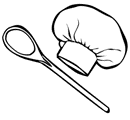What Is Aquafaba, Anyway?
Aquafaba is starchy water leftover from cooking legumes — like black beans, or chickpeas, or kidney beans. But for the purpose of this article, we're going to focus on chickpea liquid, which is what is commonly used as a substitute for eggs (we don't recommend using another type of aquafaba here). Why? Youngman says chickpea aquafaba is of the best quality, has the right amount of starch in the liquid, and doesn't have a strong flavor.
Should You Make Your Own Aquafaba? How Do You Make it?
This is something we don't recommend, either. While you can make aquafaba by cooking your own chickpeas, Youngman says she's found that the store-bought version you'd get in a can of chickpeas is starchier and works better. Plus, it's easier — all you have to do is open the can, strain out the chickpeas, and you're done.
How to Cook with Aquafaba
Use this ratio when substituting aquafaba for eggs: three tablespoons of aquafaba for one egg, two tablespoons for one egg white, and one tablespoon for one yolk. Youngman explains that what makes aquafaba such a great egg substitute is its ability to trap air. When you whip it and aerate it, it forms a foam that holds its shape. That's why it's often used to make vegan meringue. If you add a little sugar and cream of tartar, treating the aquafaba like egg whites, it will beat into a glossy, stable meringue that you can use to make dishes like meringue cookies, an elegant topping for a tart, or pavlova.
Youngman also says that aquafaba can give structure and stability to dishes, and keep the crumb light in a baked good. She recommends trying it as an egg substitute in dishes like coffee cake, muffins, and banana bread. Aquafaba is also used to make the lemon frosting in these Blackberry-Cardamom Cupcakes from Food & Wine Associate Food Editor Paige Grandjean.
Another fun way to use aquafaba? This French 75 Dip, which comes from Marc Rose of White Limozeen in Nashville. The dip is inspired by the flavors of the classic cocktail — you'll find ground juniper berry and lemon in the ingredient list — and uses aquafaba as the base to help achieve a creamy, whipped texture. Or, try it in this Plum Gin Fizz as a substitute for the egg white.
How Long Does Aquafaba Last?
If you have any leftover aquafaba, transfer it to an airtight container and keep it in the fridge or freezer, depending on when you're planning on using it. Youngman recommends keeping it in the fridge no longer than a week; in the freezer, about a month. She says you can try freezing it in individual portions via an ice cube tray, so you can defrost as needed. That way, delicious vegan treats are only a few steps away.
